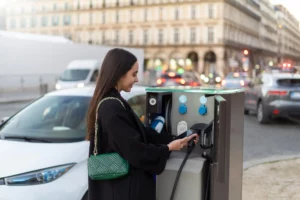
Home / EV Charging News / Home vs. Public Charging: Weighing the Advantages and Disadvantages
As electric vehicles (EVs) continue to grow in popularity, the debate between home charging and public charging becomes more relevant for both current and prospective EV owners. Each charging method offers its own set of advantages and disadvantages that can impact your overall experience, costs, and convenience. This article explores the pros and cons of home charging versus public charging, helping you make an informed decision about which option best suits your needs.
One of the primary benefits of home charging is convenience. With a home charging station, you can easily charge your EV overnight, ensuring that it is ready to go each morning. This eliminates the need to visit public charging stations and allows for more control over your charging schedule. Home charging is especially advantageous for those with regular daily commutes, as it provides a consistent and reliable charging solution.
Cost-effectiveness is another significant advantage of home charging. Charging your EV at home typically costs less than using public charging stations, especially when you can take advantage of off-peak electricity rates. Additionally, some regions offer incentives or rebates for installing home charging stations, further reducing the initial setup cost. Over time, the savings on energy costs can make home charging the more economical option.
However, home charging does come with some disadvantages. The initial installation of a home charging station, particularly a Level 2 charger, can be expensive and may require upgrades to your home’s electrical system. Moreover, home charging is not always an option for everyone, particularly for renters or those living in multi-unit dwellings without dedicated parking spaces or access to an electrical outlet.
Public charging offers a different set of advantages, primarily centered around flexibility and accessibility. Public charging stations are widely available in many urban areas, shopping centers, workplaces, and along highways, making it convenient for long trips or when you’re away from home. The availability of fast-charging stations allows for quicker top-ups, significantly reducing the time it takes to recharge your EV compared to home charging.
For those who do not have the option of installing a home charging station, public charging provides a vital alternative. This is particularly true for apartment dwellers or those who live in areas where home charging is not feasible. Public charging networks continue to expand, making it easier for more people to access EV charging infrastructure.
On the downside, public charging can be more expensive than home charging, particularly at fast-charging stations where rates are often higher. The cost per kilowatt-hour at public stations can add up, especially for frequent users. Additionally, the reliance on public charging means that you are dependent on the availability of charging stations, which can sometimes be limited or occupied, leading to potential delays.
When deciding between home and public charging, it’s essential to consider your specific circumstances and lifestyle. Home charging is ideal for those who have consistent access to a parking space and can afford the initial installation costs. It provides the convenience of charging at your own pace and can be more cost-effective in the long run.
On the other hand, public charging is a better option for those who do not have access to home charging or who need the flexibility to charge their EV on the go. Public charging stations offer the convenience of fast charging, which can be particularly useful during long trips or when you’re short on time.
For some EV owners, a combination of both home and public charging might be the best solution. Home charging can cover daily needs, while public charging can provide support during long trips or when additional range is needed quickly.
Both home and public charging have their distinct advantages and disadvantages, and the right choice depends on your individual needs and circumstances. Home charging offers the convenience of overnight charging and potential cost savings, but requires an initial investment and may not be accessible to everyone. Public charging provides flexibility and is essential for those without home charging options, but can be more expensive and dependent on station availability. By carefully considering these factors, you can choose the charging method that best supports your lifestyle and maximizes the benefits of owning an electric vehicle.
